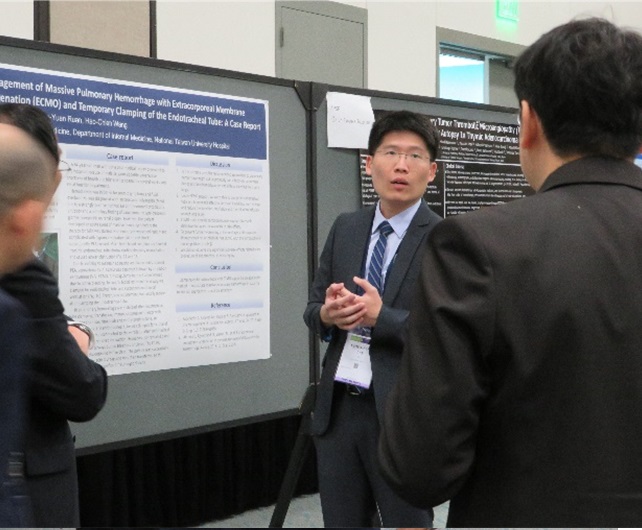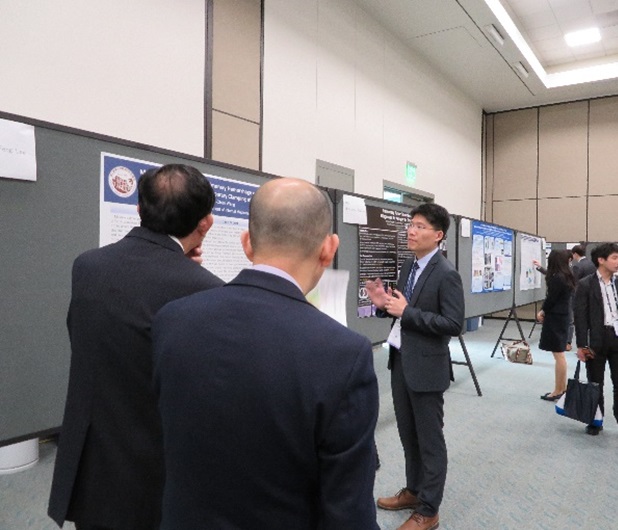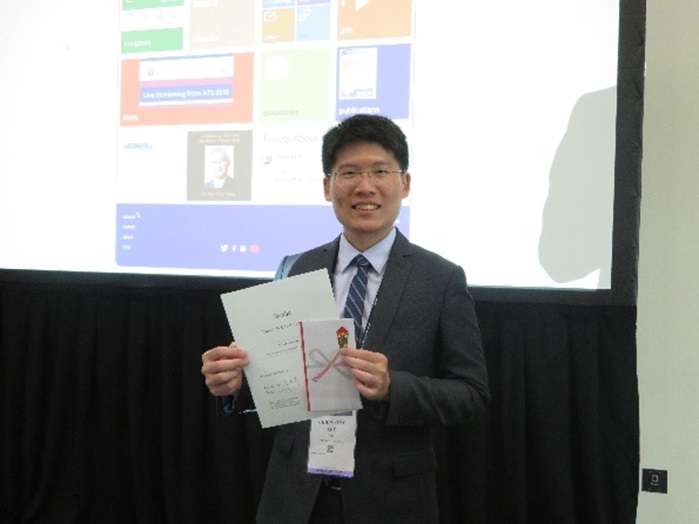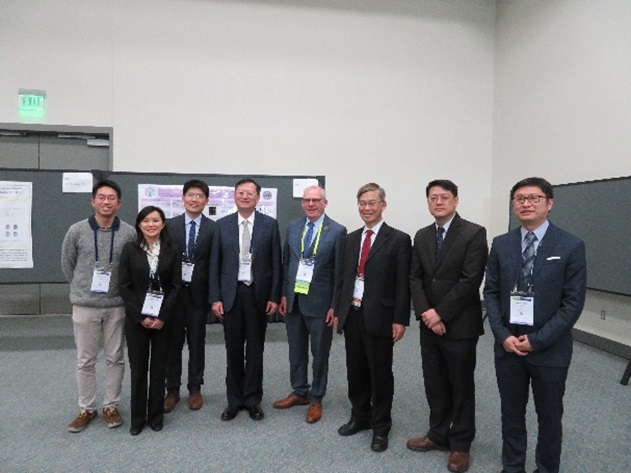Chien-Feng Lee
National Taiwan University Hospital
APSR/ISRD Session at the ATS International Conference 2018 - post-session report
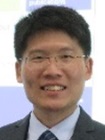
First, I'm very honoured and grateful to the APSR for selecting our case report as a top ranked poster presentation from APSR-ISRD young investigators.
In this case report, "Management of Massive Pulmonary Hemorrhage with Extracorporeal Membrane Oxygenation (ECMO) and Temporary Clamping of the Endotracheal Tube", we described an applicable and effective method to resuscitate vasculitis-related massive bilateral pulmonary hemorrhage with clamping the endotracheal tube and ECMO support. In this extreme case, the traditional recommended approaches to pulmonary hemorrhage, such as bronchoscopic intervention or transarterial embolization might not be promptly and effectively performed due to unstable hemodynamics and diffuse bleeding from both lungs. Under ECMO support, we can clamp the endotracheal tube as airway tamponade therapy. ECMO also stabilized the hemodynamics and let us have time to treat underlying disease, microscopic polyangiitis. The patient was successfully recovered from this life-threatening episode and there was no obvious adverse effect of clamping the endotracheal tube. The successful experience provides us an alternative method if traditional management of massive pulmonary hemorrhage cannot be employed. I think this is a case report worth sharing to other doctors in case they encounter similar life-threatening pulmonary hemorrhage in their clinical practice.
I learned a lot from this poster presentation in the APSR-ISRD joint session. Since it was my first time attending and presenting in an international conference, the experience of discussing and exchanging ideas with other distinguished scholars and practitioners had widened my knowledge regarding patient care.
Second, the presentation presented in each session broadened my horizon in clinical practice and optimal patient care. I had the chance to meet other excellent and outstanding investigators from different countries, including China, Japan, Republic of Korea, Australia, New Zealand, Vietnam, Philippines, Indonesia, Malaysia and Taiwan, and learn from their study through their presentation. Besides the young investigators' presentations, the presentations from Dr Yoichi Nakanishi "New trend of lung cancer treatment: biomarker-based medicine", Dr Chong Jen Yu "LDCT screening for lung cancer in never smoker" and Dr Chunxue Bai "Early detection of lung cancer with medical internet of things", were impressive. Upon all the presentations, the speech provided by Dr Chin-Chung Shu, the best abstract award winner, and Professor Chong Jen Yu left a deep impression on me. Dr Shu discussed various inflammatory cytokine responses in different non-tuberculous mycobacteria (NTM) species and tried to find the risk factors for each NTM infection. Also, Dr Yu's study project about the LDCT screen in non-smoker Asian woman would affect the current guideline of lung cancer screen. I've learned a lot through this session's programme.
Finally, I would like to thank the APSR and ISRD again for holding this session at the ATS annual conference in San Diego. I had a great experience in this session.
